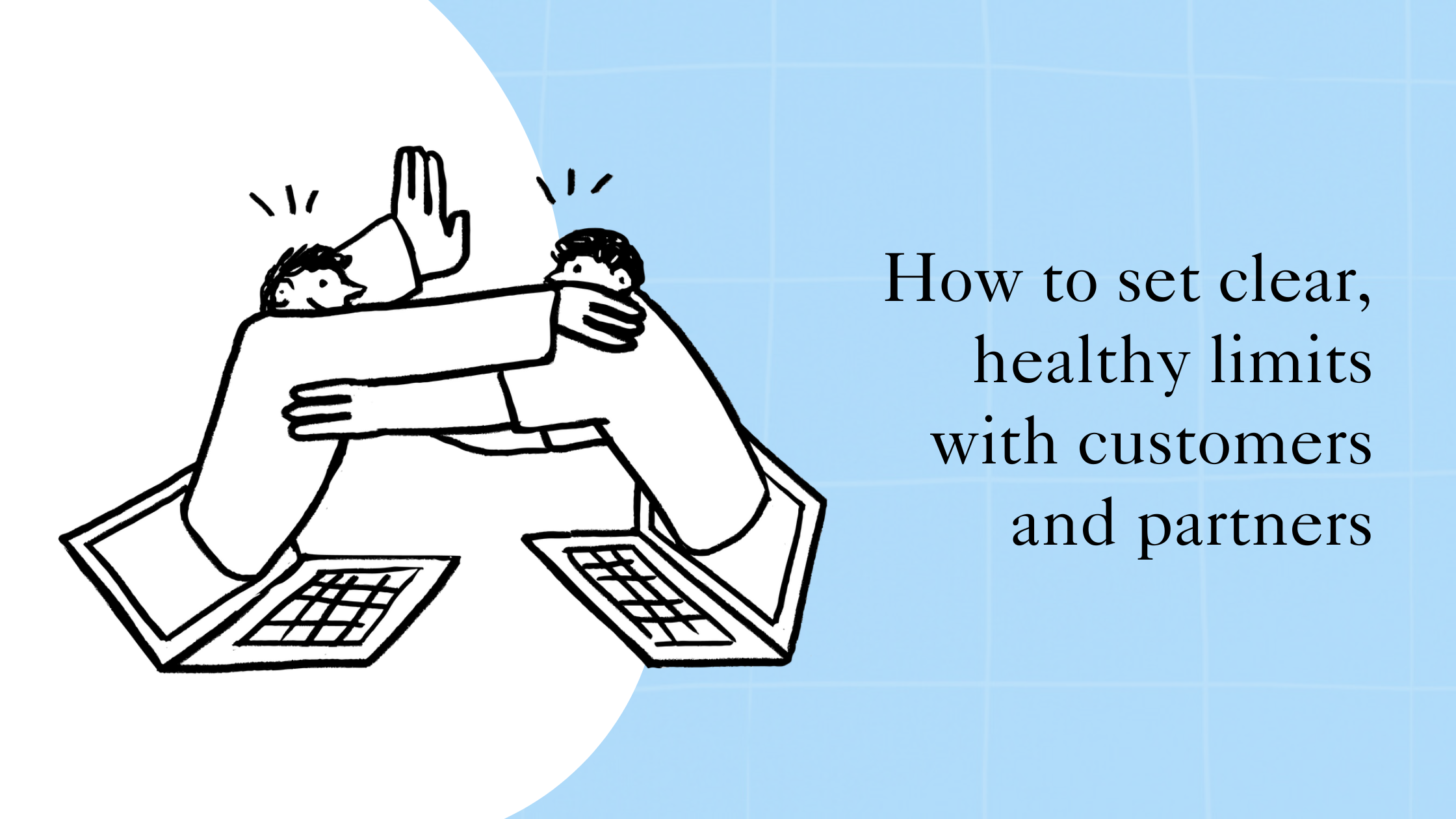In the business world, it's essential to establish clear, healthy boundaries with customers and partners. This can help you maintain healthy, productive professional relationships while avoiding conflictual situations.
Here are some steps you can take to establish clear, healthy boundaries in your professional relationships...
Table of contents
1. Determine your limits
Before you can set clear boundaries, you must first determine what you are willing to do and what you are unwilling to do. Take the time to examine your own limits and think about what is acceptable to you in your professional relationships. There are several exercises for discovering and applying your limits:
2. Communicate your limits clearly
Make sure you communicate your limits clearly to your customers and partners. You can do this directly by explaining what you are willing to do and what you are not. You can also establish ground rules for your business that reflect your limits. I often suggest creating written documents that customers and partners can keep and consult as needed. Signing the document is at your discretion, but this method can avoid certain conflicts.
Here is is an example of a document (in French) we've developed in the past that converges both service offer and terms and conditions.

3. Be consistent
Once you've established your limits, it's important to maintain them consistently. If you start making exceptions to your limits, it can create confusion and unrealistic expectations. To be consistent, it's important to define your values and principles, and apply them consistently in all situations. If you establish a rule with a customer or partner, it's important to stick to it at all times, no matter how difficult or uncomfortable it may seem. If you can't abide by a rule you've established, it's better to change or remove it than to break it.
Being consistent also means communicating clearly and effectively with your customers and partners. If you set limits with them, make sure they understand them and know what to expect from you. If you need to change these limits, inform them promptly and explain the reasons for the change.
Finally, to be consistent, it's important to take time to reflect on your actions and words. Ask yourself whether what you're doing or saying is in line with your values and principles, and whether it's beneficial to you and your professional relationships. By being consistent, you can build relationships of trust and respect with your customers and partners, and ensure that you are able to create a healthy and productive working environment for all.
4. Be respectful
Setting clear boundaries doesn't mean being rude or insensitive to the needs of customers and partners. Make sure you communicate your boundaries respectfully, and work with them to find solutions that meet their needs while respecting your limits.
5. Evaluate and adjust your limits
The boundaries you set may change over time as your needs and business evolve. It's important to evaluate them regularly and adjust them as necessary to maintain healthy, productive working relationships.
Here are some steps you can take to assess and adjust your limits:
- Think about your needs and values: To assess your limits, it's important to take the time to reflect on your needs and values. What aspects of your work or professional relationships are most important to you? What makes you feel uncomfortable or stressed? By understanding these aspects, you can better define your limits.
- Listen to your emotions: Your emotions are an important indicator of your limits. If you feel uncomfortable or angry about a professional situation, this may indicate that your limits have been exceeded. Take the time to listen to your emotions and understand what they're telling you.
- Identify behaviors that exceed your limits: By identifying behaviors that exceed your limits, you can better communicate your expectations to your customers and partners. For example, if you've set a limit on working hours and your customers are sending you emails late at night, you can let them know that this doesn't meet your expectations.
- Communicate your limits clearly: Once you've identified your limits, it's important to communicate them clearly to your customers and partners. Make sure they understand your expectations, and know what is and isn't acceptable. Be direct and honest in your communications.
- Adjust your limits if necessary: Your boundaries may change over time, depending on your professional experience or evolving needs and values. If you realize that your boundaries need adjusting, don't be reluctant to modify them accordingly. You can also regularly re-evaluate your limits to make sure they're still in line with your needs and values.
6. Find customers and partners who follow your way of doing things
An additional tip to consider when establishing clear and healthy boundaries with customers and partners is to find those who already share your ways and values. Before you even enter into a professional relationship, you can use tools to determine whether your customers' and partners' expectations match your own.
One method of assessing the professional compatibility between you and your potential customers or partners is to use a « common methodology ». Cette approche compare les attentes de chaque partie avec leurs méthodes de travail et va au-delà de la simple comparaison des valeurs d’entreprise pour trouver un « «win-win» situation".
To help you apply this method, our team has developed a tool available as an example at this link.
This tool aims to unite professionals and their future customers by assessing the compatibility of their respective working methods.
Ultimately, it's important to take the time to determine your own boundaries, communicate those boundaries clearly to your customers and partners, and maintain those boundaries consistently and respectfully. By using a measurement method like the “common methodology”, you can also find customers and partners who are more likely to respect your limits and work productively with you.
We hope these tips will help you set healthy boundaries and respect yourself better, whether in your professional or personal life. Take the time to think about your own needs and what's important to you, and don't be afraid to set boundaries to protect and fulfill yourself.
We encourage you to try out these tips and share your results with us in the comments below. If you have any questions, please contact us here or visit our Q&A.
By taking care of yourself and learning to respect yourself better, you can improve your quality of life and create healthier, more fulfilling professional relationships.

